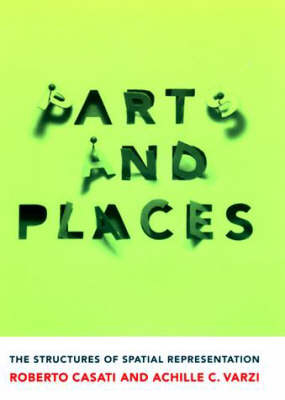
Parts and Places
The Structures of Spatial Representation
Seiten
1999
MIT Press (Verlag)
978-0-262-03266-7 (ISBN)
MIT Press (Verlag)
978-0-262-03266-7 (ISBN)
- Titel ist leider vergriffen;
keine Neuauflage - Artikel merken
Addresses fundamental issues in the philosophy of spatial representation. The book includes analysis of the interplay between meteorology, topology and the theory of spatial location proper. This leads to a unified framework for spatial representation which is tested against metaphysical questions.
Thinking about space is thinking about spatial things. The table is on the carpet; hence the carpet is under the table. The vase is in the box; hence the box is not in the vase. But what does it mean for an object to be somewhere? How are objects tied to the space they occupy? In this book Roberto Casati and Achille C. Varzi address some of the fundamental issues in the philosophy of spatial representation. Their starting point is an analysis of the interplay between mereology (the study of part/whole relations), topology (the study of spatial continuity and compactness), and the theory of spatial location proper. This leads to a unified framework for spatial representation understood quite broadly as a theory of the representation of spatial entities. The framework is then tested against some classical metaphysical questions such as: Are parts essential to their wholes? Is spatial co-location a sufficient criterion of identity? What (if anything) distinguishes material objects from events and other spatial entities? The concluding chapters deal with applications to topics as diverse as the logical analysis of movement and the semantics of maps.
Thinking about space is thinking about spatial things. The table is on the carpet; hence the carpet is under the table. The vase is in the box; hence the box is not in the vase. But what does it mean for an object to be somewhere? How are objects tied to the space they occupy? In this book Roberto Casati and Achille C. Varzi address some of the fundamental issues in the philosophy of spatial representation. Their starting point is an analysis of the interplay between mereology (the study of part/whole relations), topology (the study of spatial continuity and compactness), and the theory of spatial location proper. This leads to a unified framework for spatial representation understood quite broadly as a theory of the representation of spatial entities. The framework is then tested against some classical metaphysical questions such as: Are parts essential to their wholes? Is spatial co-location a sufficient criterion of identity? What (if anything) distinguishes material objects from events and other spatial entities? The concluding chapters deal with applications to topics as diverse as the logical analysis of movement and the semantics of maps.
| Erscheint lt. Verlag | 27.8.1999 |
|---|---|
| Reihe/Serie | Bradford Books |
| Zusatzinfo | 30 |
| Verlagsort | Cambridge, Mass. |
| Sprache | englisch |
| Maße | 160 x 231 mm |
| Gewicht | 499 g |
| Themenwelt | Geisteswissenschaften ► Philosophie |
| Geisteswissenschaften ► Psychologie ► Allgemeine Psychologie | |
| Geisteswissenschaften ► Psychologie ► Verhaltenstherapie | |
| ISBN-10 | 0-262-03266-X / 026203266X |
| ISBN-13 | 978-0-262-03266-7 / 9780262032667 |
| Zustand | Neuware |
| Haben Sie eine Frage zum Produkt? |
Mehr entdecken
aus dem Bereich
aus dem Bereich
Buch | Softcover (2024)
Hogrefe Verlag
34,95 €


